Decision-making plays a crucial role in both personal and professional lives. Whether it’s deciding what to eat for dinner or setting the strategic direction of an entire company, making decisions is an essential skill for achieving success. Structured decision-making processes help ensure that the best possible outcome is reached by providing a clear framework to organize thoughts, set priorities, and keep everyone accountable.
Software like monday work management can streamline this process, allowing teams to build workflows that guide decisions from start to finish. By bringing all relevant data into one place, monday work management empowers organizations to make smarter, faster decisions with confidence.
What is the decision-making process?
The decision-making process is a structured approach to evaluating options and making key decisions that align with your goals. It involves gathering relevant information, brainstorming kinds of decisions, and carefully weighing the pros and cons to ensure the best outcome. Whether you’re handling a business decision-making process or navigating the consumer decision-making process, this method helps you avoid bad decisions and make well-informed choices that lead to success.
Several techniques can enhance your decision-making in any decision context, including:
- Cost-benefit analysis: Weighing the costs against the potential benefits of each option.
- Decision trees: Mapping out potential outcomes for every choice to visualize their impact.
- Pareto principle: Focusing on the 20% of actions that produce 80% of the results, allowing for more efficient decisions.
- Decision matrix: Comparing options based on specific criteria like feasibility, cost, and overall impact to ensure well-rounded choices.
This process is adaptable to both professional and personal settings. Whether you’re crafting long-term business strategies or making everyday decisions, a well-structured decision-making process keeps you on track and focused on what truly matters.
7 steps of the decision-making process
Every decision starts with a structured approach. Breaking down complex decisions into measurable steps makes the process more efficient and keeps your team on track. Here’s a detailed guide to help you make informed choices at every stage, especially when dealing with typical business decisions.
1. Identify the decision
The first and most important step is to clearly define what needs to be decided. Whether you’re selecting current products to promote or making strategic business decisions, having a well-defined problem or goal keeps your team focused and ensures each action has a clear purpose. This basic step forms the foundation for everything that follows.
Things to watch out for: Vague or unclear decision statements can create confusion and delay progress.
Pro tip: Use monday work management’s Workdocs to outline decision points and gather initial input from your team. This keeps everyone aligned from the start and ensures the decision-making tools you use later are based on solid groundwork.
2. Gather information
Once the decision is clearly defined, it’s time to collect the necessary data and insights to make an informed choice. Information can come from team input, historical data, or external sources. The goal is to gather enough relevant information to move forward without feeling overwhelmed.
Things to watch out for: Too much data can cause analysis paralysis, slowing down the business decision-making process.
Pro tip: Keep all feedback, data, and key insights centralized within monday work management to stay organized and avoid scattered information.
3. Identify alternatives
After gathering the data, it’s time to brainstorm alternative options. This step allows you to explore multiple solutions, ensuring you’re considering a variety of approaches. Creativity and collaboration are essential here to avoid bad decisions.
Things to watch out for: Limiting your options too early can introduce bias, so explore a broad range of solutions.
Pro tip: Use monday work management’s visual boards, such as Kanban or Gantt charts, to map out different alternatives. These tools provide a clear overview of each option’s potential impact, helping your team evaluate all possibilities in a clear and organized way.
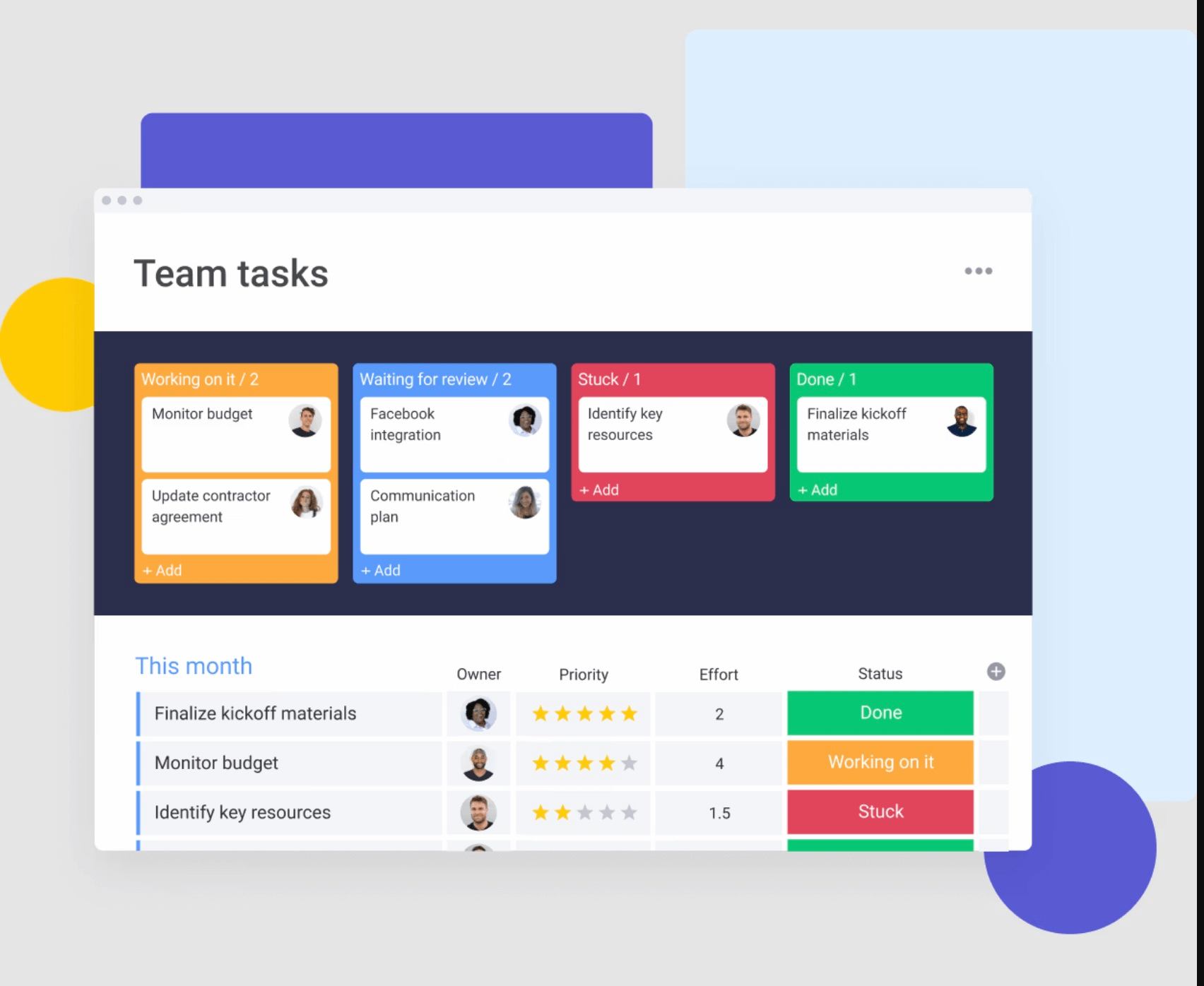
4. Weigh the evidence
Now it’s time to evaluate each alternative based on its merits. Carefully consider the pros, cons, risks, and benefits of every option. This step ensures your decision is grounded in solid evidence rather than assumptions.
Things to watch out for: Cognitive biases like confirmation bias can cloud your judgment, leading you to favor options that fit preconceived ideas rather than objective facts.
Pro tip: Use monday work management’s dashboards to centralize and compare key metrics across alternatives. This evaluation helps the decision-making team weigh each option based on data-driven insights and move toward a more rational decision-making process.
5. Choose among alternatives
After evaluating the alternatives, it’s time to make a decision. The selected option should meet your objectives and be feasible and beneficial in the decision context. Whether it’s a purchase decision or operational strategy, the choice should align with your goals.
Things to watch out for: Decision fatigue can occur when too many choices are on the table. Decision-making tools like a decision-making matrix or an impact effort matrix can simplify this process.
Pro tip: Use monday work management’s decision matrix template to visually compare alternatives based on key metrics like feasibility, cost, and impact. This makes it easier to identify the most viable option and move forward confidently.
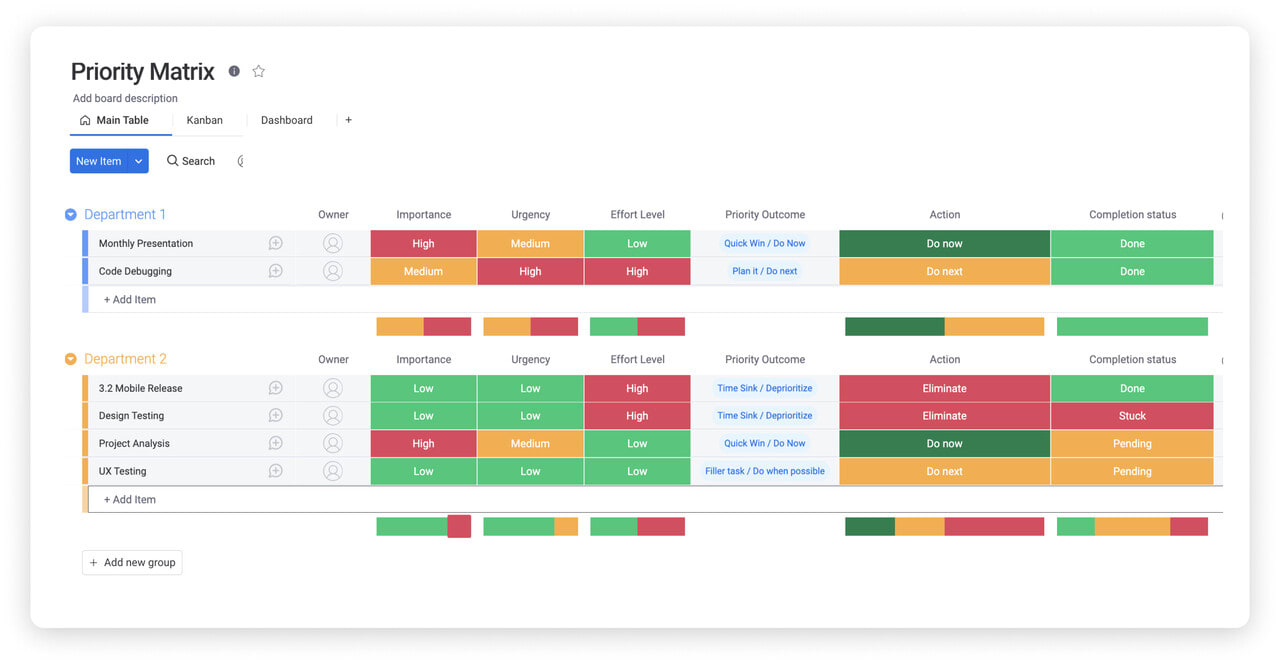
6. Take action
With a decision made, it’s time to implement. This is where clear action steps, assigned responsibilities, and deadlines are crucial to ensure the plan is executed efficiently. Collaboration and communication are key during this phase.
Things to watch out for: Ambiguity in action steps or unclear responsibilities can lead to misunderstandings and delays.
Pro tip: Use monday work management’s automations and task management tools to assign tasks, set deadlines, and monitor progress. This ensures everyone is on track and working toward the goal.
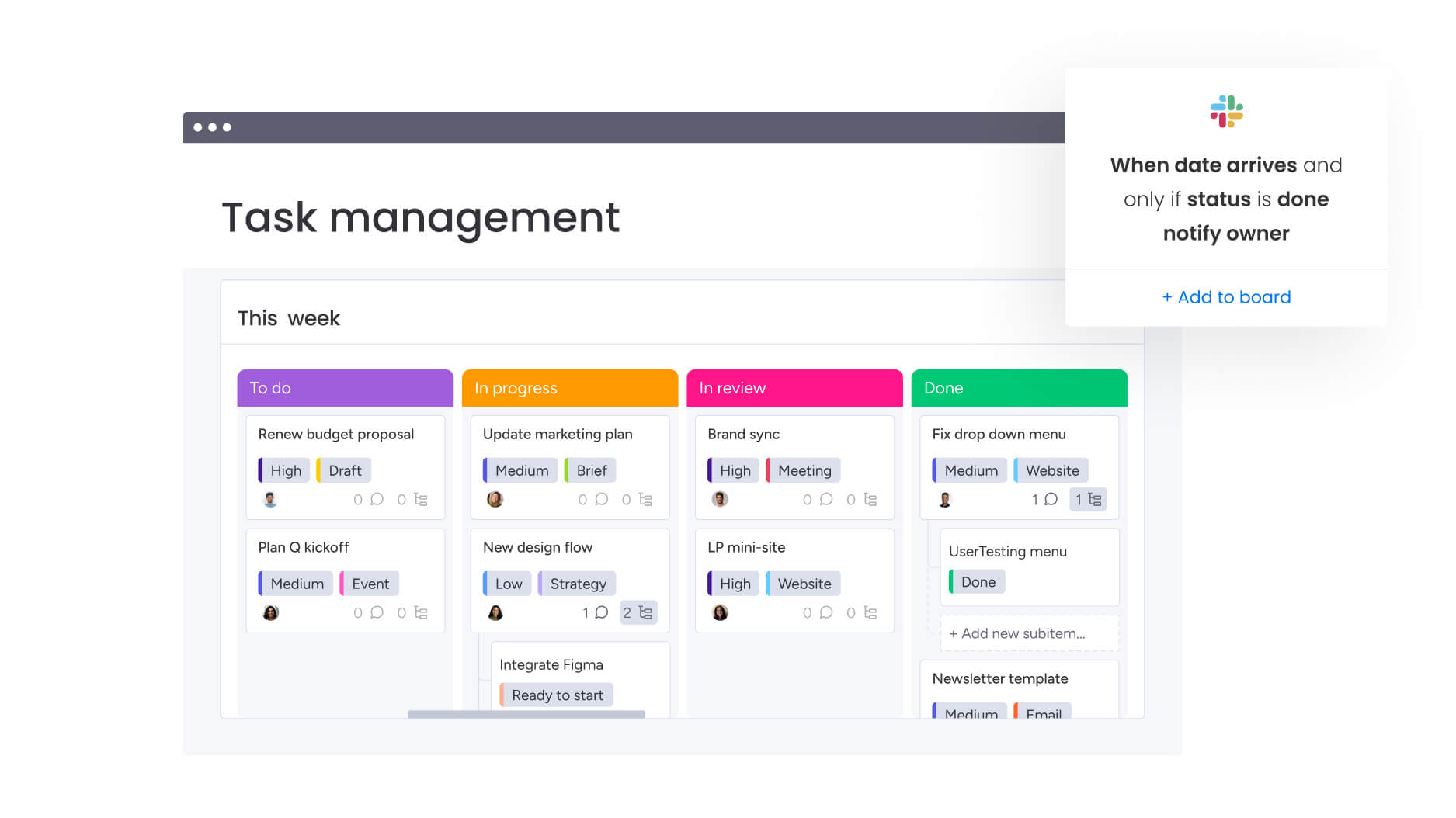
7. Review your decision
Once implemented, it’s essential to review the outcome of your decision. Did the decision achieve the desired result? Reviewing the process provides valuable insights into what worked and what could be improved for future key decisions.
Things to watch out for: Skipping this review phase can result in missed opportunities for learning and improvement in the overall business decision-making process.
Pro tip: Use monday work management’s dashboards to track real-time insights and gather feedback from the team. This helps evaluate the effectiveness of the decision and informs any additional steps needed for improvement moving forward.
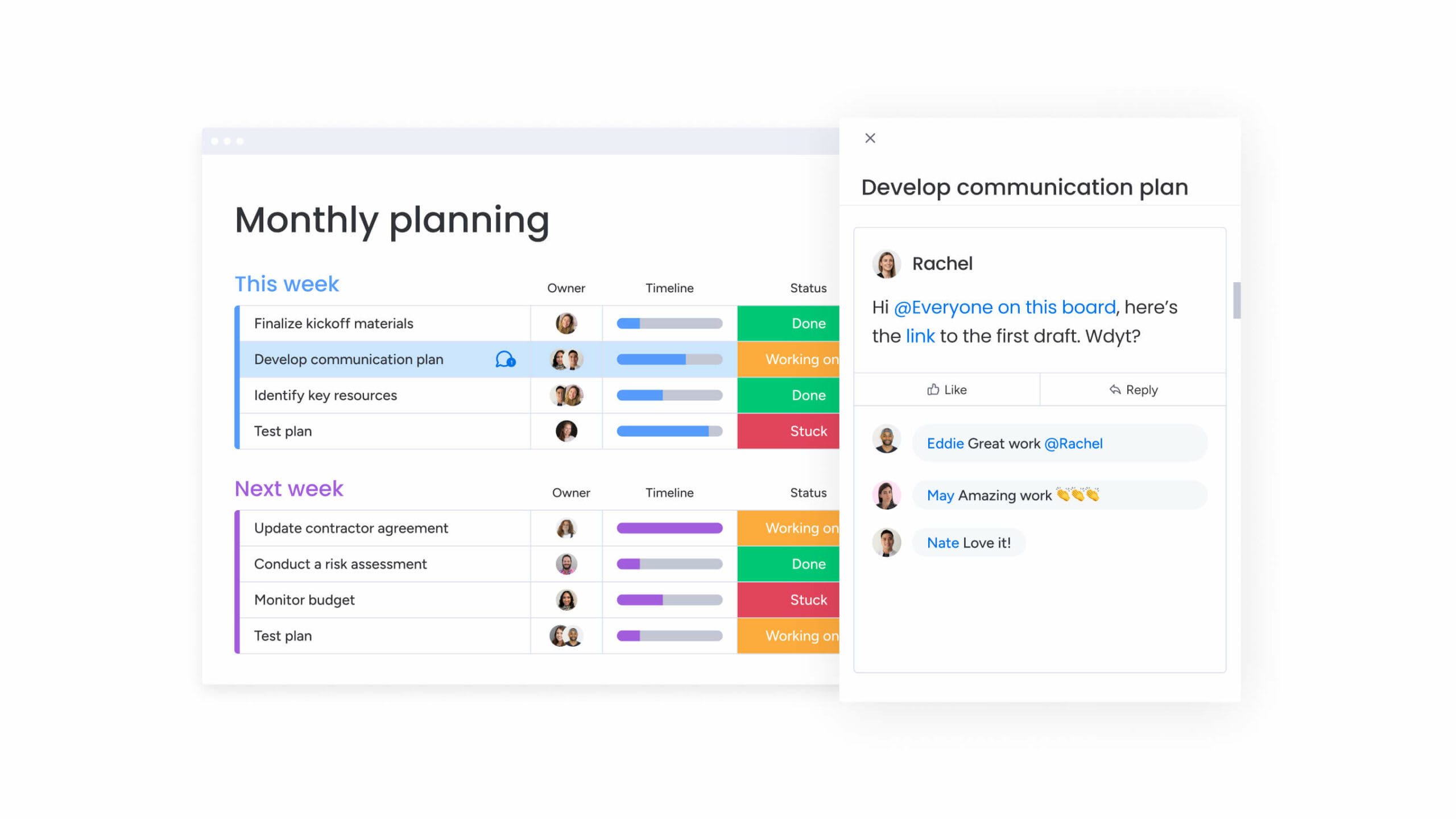
Types of decision-making models
Rational model
The rational model follows a structured, step-by-step approach to decision-making. It’s grounded in logic and data, requiring a thorough analysis of each option. You gather information, weigh the pros and cons of different alternatives, and make a decision based on the most logical choice. This model is best suited for situations where you have time to evaluate all variables.
Intuitive model
The intuitive model relies on gut feelings and personal experience rather than extensive data. This model is often used in situations where you need to make quick decisions without access to a lot of information. It’s about trusting your instincts and drawing on your expertise.
While this model can be efficient, it’s important to be aware of personal biases that may cloud judgment. Rely on this model when you have significant experience in a particular area.
Recognition-primed decision (RPD) model
The recognition-primed decision (RPD) Model is designed for fast, informed decisions in high-pressure situations. It’s based on recognizing patterns from previous experiences and using them to quickly choose the best course of action. This model is commonly used by experts who can quickly assess a situation and draw from their experience to make a decision without needing to evaluate all the details.
Creative model
The creative model encourages out-of-the-box thinking to find unique and innovative solutions. It’s less focused on data and more about generating ideas through brainstorming, collaboration, and experimentation. This model is great for situations where traditional solutions aren’t working, and a new approach is needed.
How to decrease decision-making bias
Bias can quietly influence decision-making, leading to less optimal outcomes. Common biases like confirmation bias, where we seek information that supports our pre-existing beliefs, anchoring, where we overly rely on the first piece of information, and overconfidence, where we overestimate our abilities or knowledge, can all skew decisions.
Reducing these biases requires a thoughtful approach and a diverse set of perspectives. According to McKinsey’s explainer on decision-making biases, there are strategies to overcome these biases and make more objective decisions. By using structured frameworks and bringing in data, teams can significantly improve the quality of their decision-making.
Tips for decreasing bias:
- Use diverse teams to bring in varied perspectives that challenge assumptions.
- Implement decision-making frameworks like decision trees or cost-benefit analyses to guide logical thinking.
- Use dashboards and data-driven tools like those in monday work management to centralize insights and ensure decisions are grounded in facts, not biases.
Decision-making techniques
Decision-making is easier when you have the right techniques in place. These proven methods help clarify options, improve decision quality, and make the process more transparent. With these strategies, your team can confidently evaluate choices and make decisions that drive success.
Cost-benefit analysis
Cost-benefit analysis helps you weigh the pros and cons of each option by assessing both the potential costs and expected benefits. This technique is perfect for situations where resources, budget, or time are involved.
Actionable tips:
- Start by listing all the possible costs and benefits of each option, including financial expenses, time commitments, and potential risks.
- Once you have your list, assign values to each cost and benefit, making sure to quantify wherever possible to create a clear comparison.
- Use monday work management’s dashboards to track and display your data. This makes visualizing and comparing options easier, helping your team make well-informed decisions.
Pro tip: check out our cost-benefit analysis template.
Decision tree
A decision tree analysis is a great way to map out your choices and their possible outcomes. This visual tool shows you the different paths your decisions could lead to, making it easier to choose the best route.
Actionable tips:
- Start at the root by defining the decision you need to make, then branch out with possible choices. Each branch should lead to a different action, along with its potential consequences.
- As you build out the tree, consider both the best-case and worst-case scenarios for each outcome to avoid surprises later.
- Use monday work management’s visual tools, like Gantt charts or Kanban boards, to map out your decision tree. These tools help you clearly see all possible outcomes and keep your team on the same page.
Pareto principle
The Pareto principle, often referred to as the 80/20 rule, highlights that 80% of your results come from just 20% of your efforts. Focusing on these high-impact decisions ensures you’re putting your energy where it counts most.
Actionable tips:
- Identify the key tasks or decisions that will have the biggest impact on your outcomes. This helps you focus on the work that matters and avoid getting lost in less important details.
- Set up automations in monday work management to keep these high-priority tasks front and center for your team, ensuring they stay focused on what drives results.
- Regularly review your progress to make sure you’re still focusing on the right tasks, adjusting your priorities as needed.
Decision matrix
A decision matrix or project priorities matrix gives your team a structured way to compare options by scoring them against important criteria. It’s especially useful when you need to make objective decisions based on a variety of factors.
Actionable tips:
- List out your options and define the criteria that are most relevant for making your decision. These could include factors like cost, feasibility, potential impact, and time.
- Give each criterion a weight based on its importance and score each option accordingly. Multiply the scores by the weights to calculate a final score for each option.
- Use monday work management’s decision matrix template to simplify the scoring process and visualize your results. This helps your team easily compare options and make data-driven decisions.
What’s the difference between problem-solving and decision-making?
While both problem-solving and decision-making involve critical thinking, they serve different purposes. Problem-solving is about diagnosing the root cause of an issue and figuring out how to fix it. Decision-making, on the other hand, focuses on selecting the best option from a set of alternatives.
- Problem-solving works well when you’re dealing with a specific challenge that needs to be addressed. For example, if a project is falling behind schedule, problem-solving helps identify why that’s happening and how to get things back on track.
- Decision-making comes into play when you need to evaluate options and choose the most effective path forward. This could be selecting a new project management tool or deciding how to allocate resources across departments.
While both processes often overlap—especially when decisions arise during problem-solving—their end goals are different.
Decision-making tips and best practices
Improving your decision-making process starts with a few key practices that keep things organized and efficient:
- Set clear objectives and criteria: Make sure you know what success looks like before diving in. Defining clear criteria for evaluating options helps keep the process focused.
- Avoid information overload: It’s easy to fall into the trap of gathering too much data. Set boundaries on how much information you need to make a confident decision.
- Use collaborative tools: Bring in the right stakeholders early to gather diverse perspectives and avoid bias.
- Break down complex decisions into smaller steps: Tackling each piece of the decision one step at a time keeps it manageable and less overwhelming.
- Regularly review past decisions: Taking time to reflect on what worked (and what didn’t) can significantly improve future decision-making.
Learn even more with our 7 decision making tips for new managers.
Common pitfalls in decision making
Even with the right approach, there are some common traps that can slow down or hinder decision making:
- Analysis paralysis: Getting stuck in endless data gathering without ever reaching a conclusion can delay progress. Sometimes, it’s better to make a well-informed choice than to wait for the perfect solution.
- Information overload: Sifting through too much data can lead to confusion. Focus on the most relevant information to avoid this pitfall.
- Decision fatigue: Too many decisions in a short span can lead to mental exhaustion, which can cause rushed or poor-quality decisions.
Pro tip: monday work management helps reduce these pitfalls by organizing all your data in one place using a decision log. You can centralize information, automate repetitive tasks, and visualize insights through dashboards—making it easier to stay on track and avoid overwhelm.
Making smarter decisions with confidence
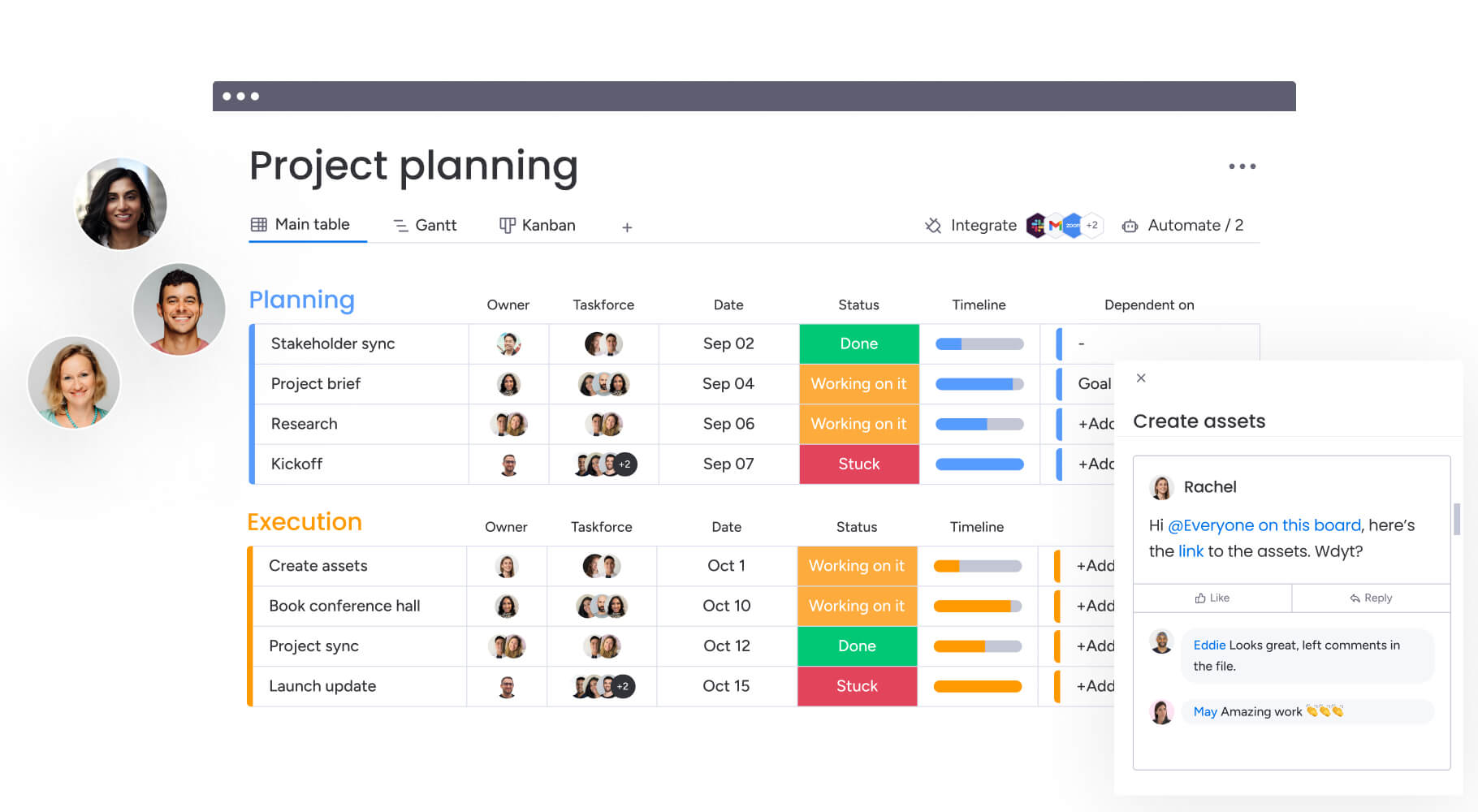
Smarter decisions come from having a clear, structured approach. A defined process—where you consider alternatives and weigh the evidence—sets you up to make confident, well-informed choices. With tools like monday work management, you get the support needed to organize your data, collaborate effectively, and track progress with ease. This ensures every decision is rooted in facts and aligned with your goals.
Whether tackling a complex project or handling daily tasks, monday work management keeps your decision-making process efficient, collaborative, and grounded in real-time insights. Drive success with a platform that empowers you to make decisions that move your team forward.
FAQs
What are the 4 R's of decision-making?
The 4 R’s—Recognize, Research, Respond, and Review—form the backbone of a solid decision process. First, decision-makers recognize the need for action, whether it's a purchase decision or another type of managerial decision. They then research to explore alternative options and gather insights. After evaluating the data, they respond by selecting the best course of action. Finally, they review the decision to assess its effectiveness and make improvements. This ensures that the decision-making team avoids the risk of a wrong decision and makes effective decisions that drive success.
What are the 4 elements of decision-making?
The 4 elements—objectives, alternatives, consequences, and trade-offs—are key to rational decision-making. Decision makers first set clear objectives, then consider alternative options before weighing the potential consequences. Understanding trade-offs is essential to avoid making the wrong decision. These elements guide managerial decisions and purchase decisions, ensuring the best outcome for the organization, whether you're planning a customer journey map or managing team workflows and performance.
What are the 4 C's of decision-making?
The 4 C’s—Clarity, Consistency, Commitment, and Consequence—are crucial for making effective decisions. Clarity ensures that everyone in the decision-making team understands the objective. Consistency aligns decisions with long-term goals, while commitment ensures follow-through. Consequence encourages consideration of the impact of managerial decisions and purchase decisions. Using this framework helps decision-makers assess alternative options thoughtfully, minimizing the chances of a wrong decision.
What are the four rules of decision-making?
The four rules—define the problem, gather information, consider alternatives, and choose the best option—are essential for making well-informed choices. Whether it’s a purchase decision or an operational issue, this structured decision process helps decision-makers and teams avoid hasty choices. Gathering information from relevant sources and weighing alternative options ensures the decision-making team engages in rational decision-making. This process is particularly useful for managerial decisions where key factors like cost, time, and long-term impact play significant roles.
How can I improve my decision-making process and avoid common pitfalls?
To improve your decision-making process and avoid pitfalls like personal biases and decision fatigue, focus on rational decision-making. Use data and clear criteria to guide your choices. Identify the kinds of decisions you’re making and break them down into smaller, manageable tasks. Involve diverse perspectives to minimize bias, and take additional steps like prioritizing tasks to avoid overwhelm. This structured approach helps you make clearer, more effective decisions.
